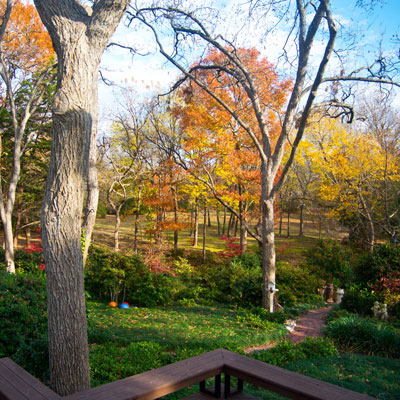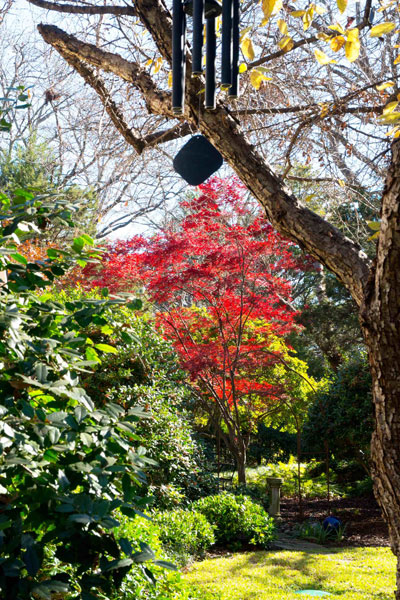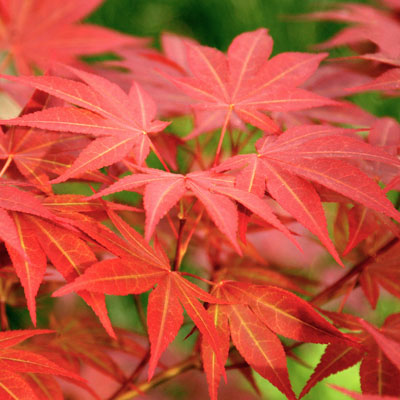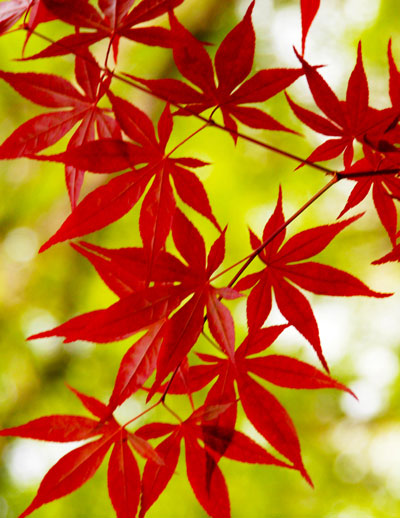Views As My Wife Sees Them
Let it be known that Neil Sperry is a practical man. My wife is an avid indoor gardener. Oh, not of houseplants. She enjoys looking out the windows and admiring the plants. And about the only ones she can name are the Japanese maples. She loves them. So I buy and plant them. We’ve been married 52 years, and those Japanese maples get part of the credit.

Fall color abounded several autumns ago, and our little Japanese maples just above the green foliage were kicking in their own red contribution. So, from the bright reds of springtime to the screaming reds of the fall, these trees are always eye-catching. Easy to love. Click image for larger view.
We live in a pecan forest. There are almost no spots of direct sun anywhere in our landscape. That means that the trees, shrubs, vines and groundcovers I grow are going to have to handle the shade and still grow without complaining.

This is a Bloodgood Japanese maple showing why it is one of the most popular varieties in America today. We’ve had this tree for more than 30 years.
When I want some kind of exclamation point in a spot with high visibility, I think first of Japanese maples. They’re about as pretty as a small, shade-tolerant tree can be.
Basics of growing Japanese maples in Texas…
Here are several facts to consider.
• There are hundreds of cultivars (selections/varieties) of Acer palmatum in the nursery industry today.
• From that list, 15 or 20 are common in retail nurseries in Texas.

Bright red shades abound in dozens of the popular cultivars of Japanese maples.
• Some have green leaves, but many have burgundy-red foliage.
• Mature heights range from 5 to 25 feet.
• As a general rule they are best suited along and east of I-35 because they prefer neutral or acidic soils, ample rainfall and high humidity.

Japanese maples prove that you don’t have to have flowers to get color in shade.
• They must have shade. We have about 20 Japanese maples in our Collin County landscape, and there isn’t one that sticks out into the sun for more than a few minutes each day.
• They must be kept uniformly moist. These trees are from parts of Japan where temperatures rarely go above 80 to 85F. But we do go above those balmy readings here in Texas, so we counteract the temperatures by keeping our trees in the shade and moist.
• Avoid high-nitrogen, lawn-type fertilizers during the heat of the summer, also to avoid leaf scorch. Spring and fall feedings will be sufficient.
• Japanese maples are winter-hardy clear to the Canadian border, and that means that they can be grown outdoors in patio pots 12 months a year.
